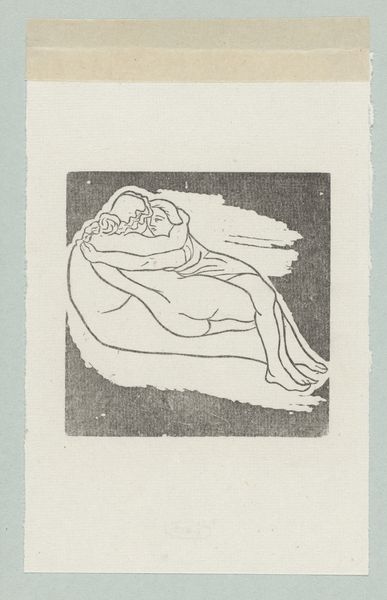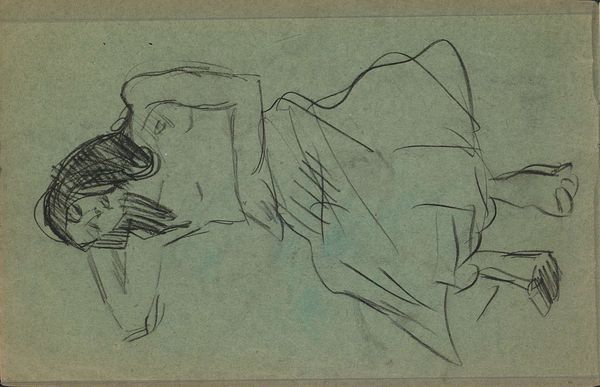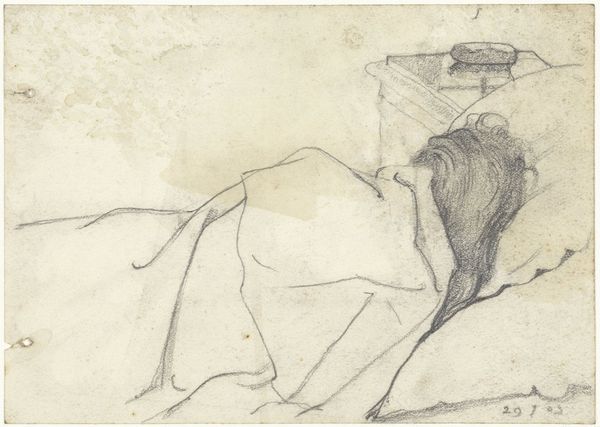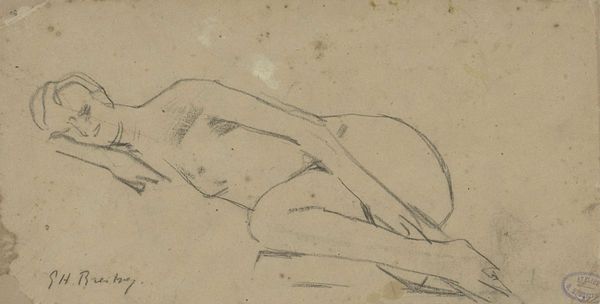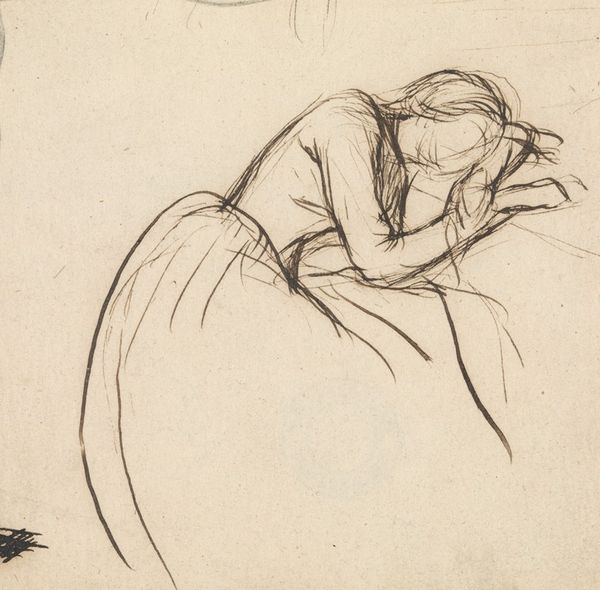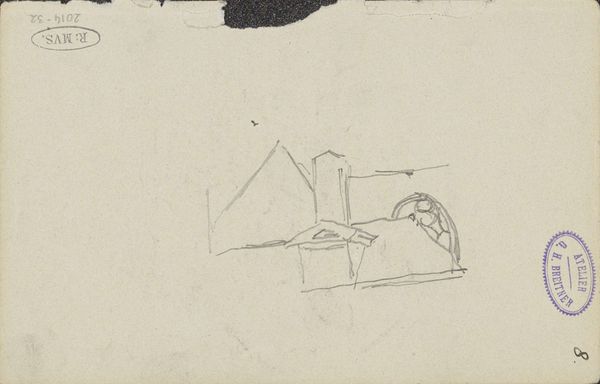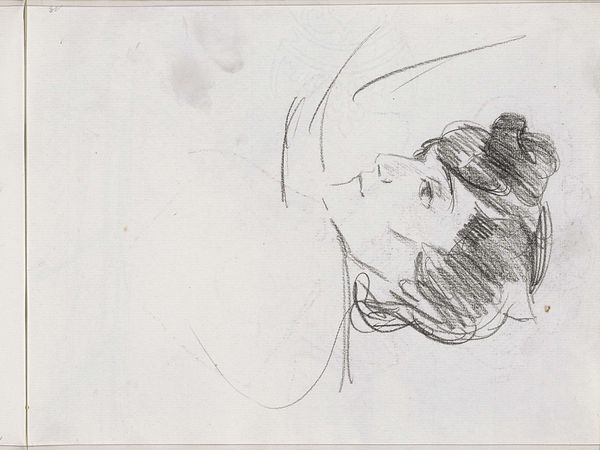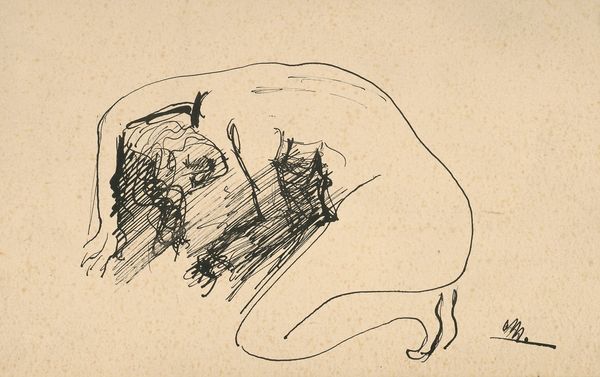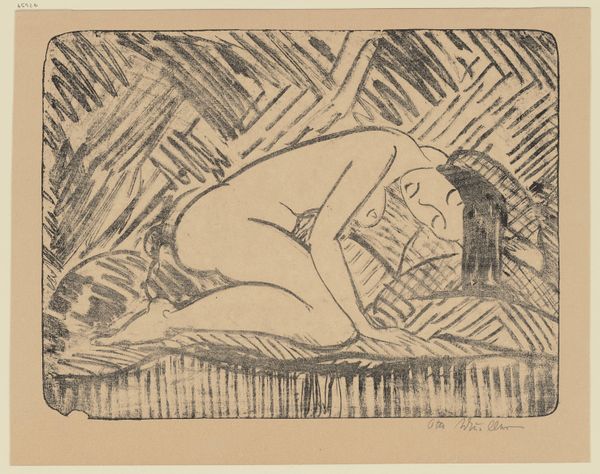
Design for large fireplace white tiles produced by Wedgwood's factory 19th century
0:00
0:00
drawing, print
#
drawing
#
neoclacissism
# print
#
figuration
#
line
Dimensions: sheet: 11 7/16 x 8 1/8 in. (29 x 20.7 cm)
Copyright: Public Domain
Curator: Today we’re observing John Flaxman's 19th-century drawing, "Design for large fireplace white tiles produced by Wedgwood's factory," currently residing at the Metropolitan Museum of Art. It appears to be a print as well, done with stark lines against a pale background. It gives off a distinctly neoclassical vibe. What's your initial reaction? Editor: Utter exhaustion. Or perhaps…entanglement? Two figures sprawled out, lines flowing into one another. It's incredibly… vulnerable, almost unbearably so. Like seeing someone's dream unraveling on paper. Curator: Precisely! The lines create a compelling formal tension. Notice how Flaxman employs line—almost exclusively line—to define form, drapery, and emotion. There's minimal shading. It emphasizes outline and contour, distilling form to its purest essence. It has the stylistic characteristic for which he was known. Editor: It feels like a story condensed into a single image. I imagine those tiles being set around a grand fireplace. You'd have this quiet drama playing out amidst the crackling fire and polite conversation. Curator: A fascinating contrast. Consider the intended purpose: a design for decorative tiles. Yet the emotional weight and intertwined bodies introduce complexities beyond mere ornamentation. We are dealing with a very controlled narrative—everything is simplified to its essential parts. Editor: Simplification…yes, it strips away the extraneous, doesn’t it? It demands we fill in the gaps ourselves, to breathe life into these white figures. They make me want to weep in some weird way. Curator: An evocative response. Flaxman frequently explored classical themes and utilized this precise, linear style to emulate the aesthetics of ancient Greek pottery and sculpture. His drawings after Homer are celebrated examples. Editor: Pottery… right! It reminds me of those ancient friezes, telling stories in a continuous flow. But those were epic stories about gods and heroes. This…this feels more intimate. More human in its failings and intertwined relationships. Curator: A cogent observation, neatly contrasting classical heroic ideals with understated emotion, perhaps nodding to the romantic undercurrents appearing in European art around the time. Editor: A great work to consider! It makes one feel both the elegance and the human connection. Curator: Indeed. Flaxman provides us with a lens through which to regard design as carrying poignant reflection, further underscoring the power of lines, the nuance, and humanistic expression.
Comments
No comments
Be the first to comment and join the conversation on the ultimate creative platform.
